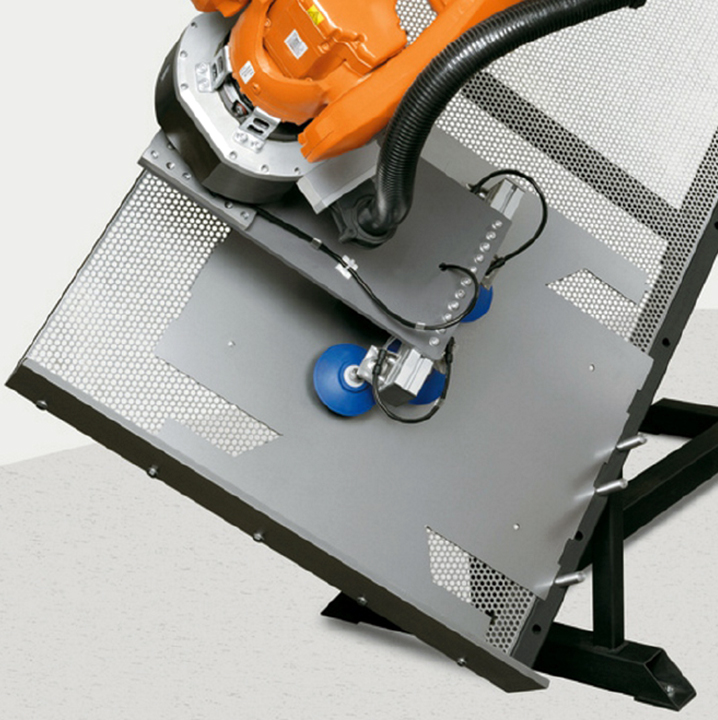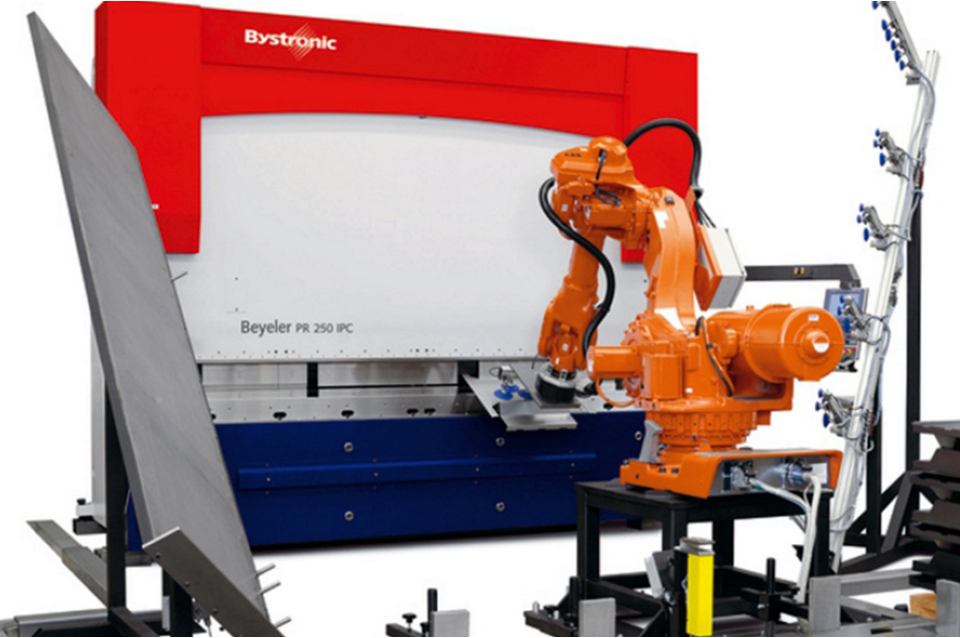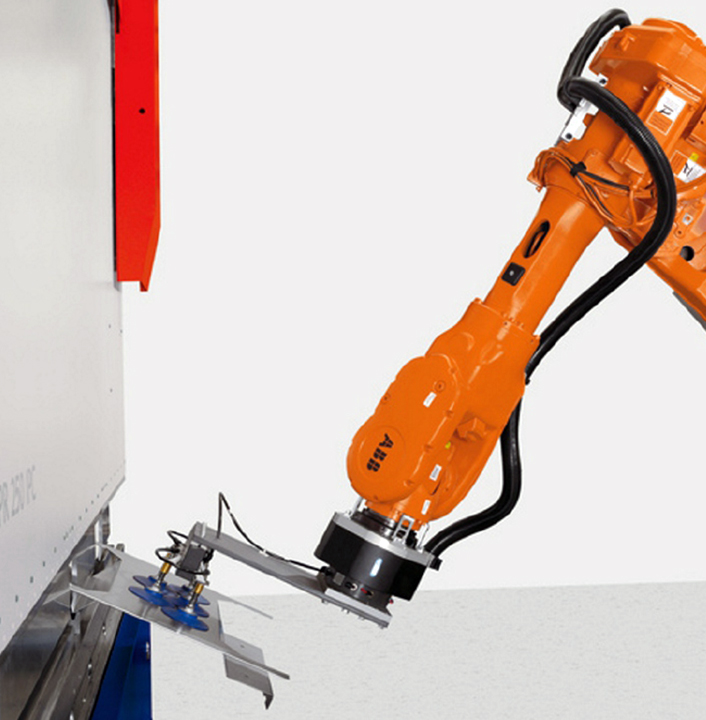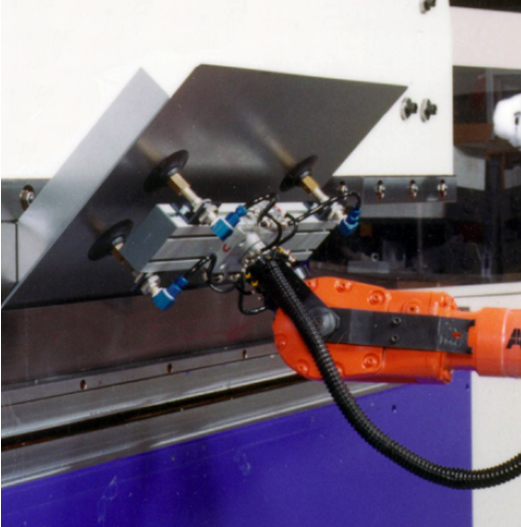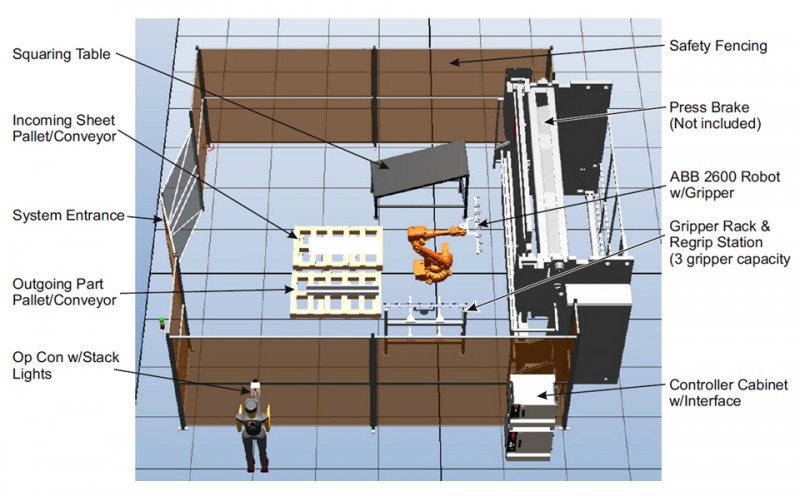Automation Improves Press Brake Profitability
Robotic press brakes offer higher productivity, more flexibility and better profitability for the fabricator. Standard robotic press brake systems from Wolf Robotics include all components, less the press brake, to accommodate common sizes and weights of typical parts. Most press brake equipment is capable of integration into Wolf standard cells.
Posted: March 16, 2012
(click on illustration to enlarge it)
Wolf Robotics LLC (Fort Collins, CO) offers an assortment of standard robotic press brake systems that include all components, less the press brake, to accommodate common sizes and weights of typical parts. Most press brake equipment is capable of integration into Wolf standard cells. Robotic press brakes offer higher productivity, more flexibility and better profitability for the fabricator.
Typical systems include an ABB 2600 robot, fencing cage for safety, op panel and all necessary interfacing, regrip station, squaring table, gripper rack (3 gripper capacity), manual ATI tool changing mechanism, incoming/outgoing pallet station, and virtual station and offline programming. You can achieve a much higher production capacity than manual operation by running the press brake at top speed. Downtime can be reduced to maintain productivity using offline programming for introducing new parts or modifications to existing products.
Assorted grippers are available for matching the correct design with the application. A manual quick-change is standard for switching out grippers. The working range of the robot can be further increased by mounting it to a swing arm or carrier track and allow both small and large sheets to be processed utilizing the entire bending length of the press. Larger sheets with more bends offer a better chance for profitability. You will experience more success with recurring production in batches of 30 to 200 sheets (depending on size and number of bends).
Equipment utilization is more important than cycle time. Keeping the machine producing parts maximizes return on investment. Offline programming can help ensure the system isn’t interrupted. Wolf systems come standard with incoming/outgoing pallet stations. To further increase productivity, you can add a system of conveyors on an unmanned cell and realize profitability even faster. Improved quality will also result from the continual repetitious movement of the robot that reduces rework and eliminates defective parts.
Wolf Robotics can provide an assortment of servo controlled robots with the appropriate payload capacity and work envelope required for every application. Gripper tools are also matched to the application, ensuring proper holding power, while not restricting access to achieve all necessary robot movements for each bend. The robot and press brake work together during the bending process exchanging signals to verify positioning and proper placement. Wolf Robotics can integrate to any of the most common manufacturers of press brake machines available.
Floor space is always a premium and you can choose the type best suited for your environment. A safety fencing cage is standard. Light curtains can be added for a more open space feel at a slightly higher cost. Getting material into the cell and finished parts out of the cell are important considerations. Wolf systems come standard with incoming/outgoing pallet stations. Conveyors can be added at a later date for further automation.
Specially designed software for creating and editing robot jobs is available to check robot access, optimize cycle times, identify conflicts and determine proper bending sequences. There is no limitation to any press brake brand and can include a library of 3D models on standard products including safety components, conveyors and other related equipment.
A manual quick-change gripper allows the operator to easily swap out gripper configurations, or tools, to expand its capability of other product production or processes. Tooling stations can accommodate several gripper configurations when changes need to be made for different stages of the part production. A squaring table will make sure the robot always has the sheet properly oriented for processing.
Wolf Robotics also offers 24/7/365 service, in-house training and provides spare parts and consumables to keep your system in production.



